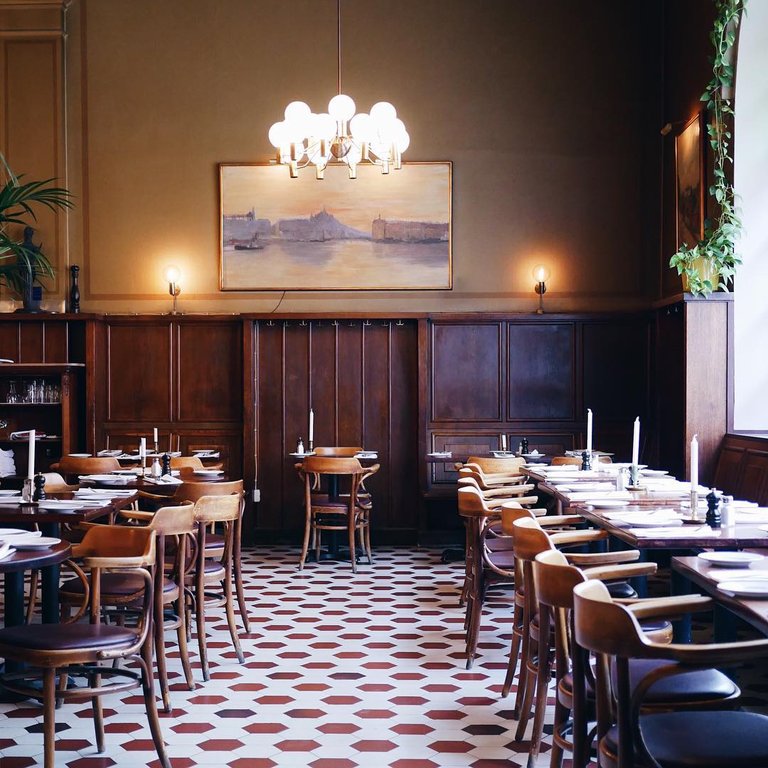Classic restaurants in Stockholm
Publish date: 22 August 2024
Dine at an establishment steeped in history and tradition. Here are some of Stockholm's oldest, and most classic restaurants.
Culinary trends come and go, but some restaurants transcend fashion and outlast them all.
From the well-preserved art nouveau-palace Berns to the working-class eatery Pelikan, these are restaurants and cafés that have served hungry diners year after year, decade after decade, and – in some cases – century after century!
Some are the oldest restaurants in Stockholm, and others are "only" a couple of decades old, but have become contemporary favorites. Below is a selection of some of Stockholm's most classic restaurants.
Restaurants from the 1600s to 1700s
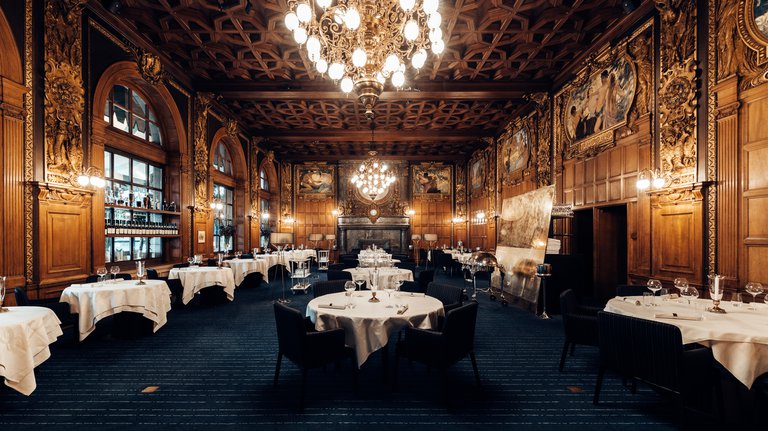
- Edsbacka Krog (1626) – The current owners of the famed Edsbacka estate in Sollentuna (just north of Stockholm) took over the restaurant in 2020. However, the manor's gastronomical history can be traced back much, much, further; records show restaurants and inns on the grounds as early as 1626.
- Den Gyldene Freden (1722) – Opened in 1722, Den Gyldene Freden is the oldest restaurant in Stockholm's oldest district; Gamla Stan (Old Town). Currently, the classic restaurant is managed by The Swedish Academy. Rumors say they still have regular lunches here, discussing literature and The Nobel Prize.
- Hasselbacken (1740–1760s) – The rumored birthplace of the eponymous Hasselbackspotatis, the Hasselbacken plot has hosted a restaurant on and off since the 1740s. The first restaurant named Hasselbacken didn't open until the 1760's though. The building has been renovated and rebuilt several times; the current one was completed in 1925.
- Operakällaren (1787) – Operakällaren, located in the Royal Opera House, opened its doors in 1787. A simple bar and eatery at first, it became a hotspot for Stockholm's it-crowd in the 1830s. It saw another renaissance in the 1950s when legendary restaurateur Tore Wretman took over the establishment, and then again in the 1980s when its nightclub Café Opera became a celebrity watering hole.
Restaurants from the 1800s
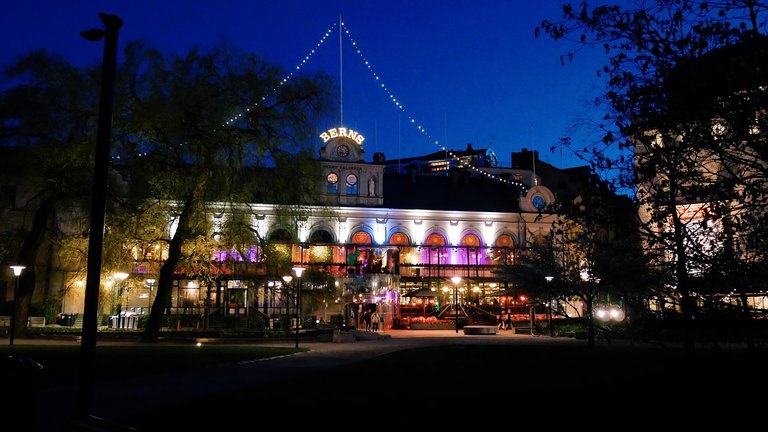
- Berns (1863) – One of Stockholm's most popular nightclubs is also one of its oldest. Originally conceived as a dinner theater inspired by Parisian ballrooms, Berns Salonger (or just Berns) has entertained Stockholmers since 1863 with music, theater, stand-up, and dance. Today it's mainly a nightclub, concert venue, and restaurant.
- Tennstopet (1867) – Tennstopet (Swedish: The Pewter Pint) originally opened in Klarakvarteren in central Stockholm. In 1965 the restaurant moved to its current location in the corner of Vasaparken. A meeting place for artists, writers, and journalists, Tennstopet is famous for its seasonal specialties. For example, it's the only restaurant in Stockholm serving crow (!) every April.
- Ulriksdals Värdshus (1868) – The Ulriksdal Palace has had a restaurant, inn or café since the 1670s. However, the business has moved around the estate for various reasons, occupying different buildings. Finally, in 1868, a Swiss chalet-style villa was built to serve as a restaurant and guesthouse and has remained open ever since.
- Zum Franzkiskaner (1889) – Opened in 1889, the bier hall Zum Franziskaner moved to its current location in 1902. Most of the art nouveau decor is still intact today, as is the focus on hearty portions of German cuisine with large Steins of beer.
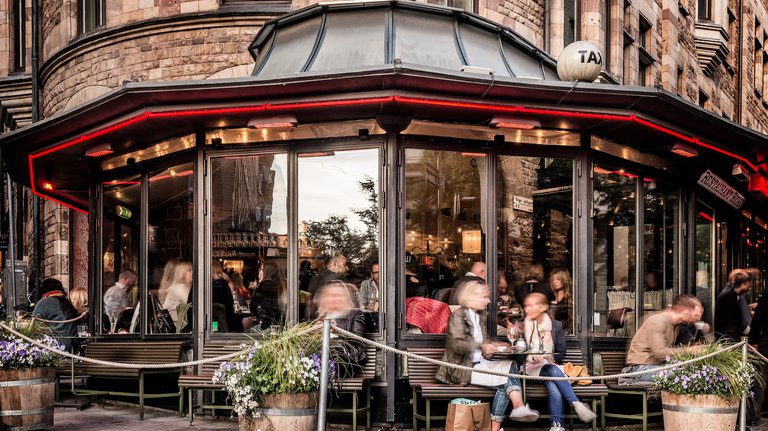
- Riche (1893) – Legendary restaurant, nightclub, and bar on Östermalm inspired by its Parisian namesake. The restaurant fell on hard times during the Second World War, but rose to prominence again under the care of restaurateur Tore Wretman and maître d' Hans Bratt, turning it into the hotspot it still is today. According to legend, the ubiquitous Toast Skagen appetizer originated in Riche's kitchen.
- Prinsen (1897) – Several storied restaurants opened in 1897, partly due to the Stockholm World's Fair being held in Djurgården between May and October. Prinsen was founded as Café du Prince but was almost instantly called Prinsen by the locals, which also became the restaurant's official name in 1905.
- Sturehof (1897) – Another class of 1897 alumni, the German-fashion bier hall was originally named Malta, and was renamed in 1905 following a management change. Several prominent Swedes – like Ingmar Bergman, Harriet Andersson, and Dag Hammarskjöld – have been regulars here. Sturehof's sotare (fried herring, served with potatoes on crisp bread) is said to have been Ingrid Bergman's favorite dish.
- Villa Godthem (1897) – Villa Godthem on Djurgården was built in 1847 as the home of a wealthy merchant. In 1897, the ownership changed, and the villa was turned into a popular cantina for the Stockholm World's Fair, and has stayed so ever since, serving classic Swedish fare.
Restaurants from the 1900s and contemporary classics
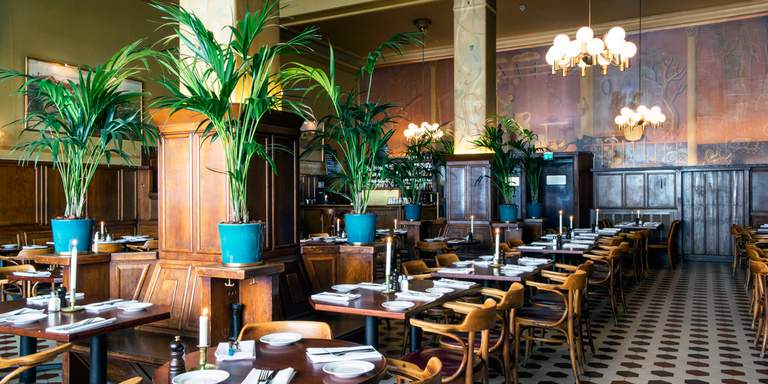
- Pelikan (1904) – One of Södermalm's most iconic restaurants. Originally named Port Arthur it opened on Blekingegatan in 1904, as an eatery serving booze and simple food to the factory workers of Södermalm. The restaurant was renamed Pelikan in the late 1960s, a hallowed name previously attributed to several legendary Stockholm restaurants.
- Mäster Anders (1905) – The classic Kungsholmen restaurant Mäster Anders has been open since 1905, which is no small feat. Its name is an homage to an even older family-run eatery, though, just a short walk from the current restaurant in a long-since demolished building.
- Kvarnen (1908) – Yet another classic Södermalm restaurant from the early 20th century. Much of Kvarnen's original interior and ambiance have been preserved. What in 1908 was an eatery serving affordable meals has today become a bar and nightclub. Kvarnen is also a popular hang-out spot for supporters of the Hammarby IF football club on match days.
- Blå Porten (1916) – The old Blå Porten was a popular restaurant near the blue archway by the Djurgården bridge. The restaurant burned down in 1889, but when Liljevalchs Art Hall opened in 1916 its museum restaurant was named as a tribute to its beloved predecessor.
- Tranan (1929) – Tranan has been a cornerstone of Vasastan's nightlife since 1929. Eatery, bar, and occasional nightclub; the restaurant on Odenplan has been many things. But the fried herring and meatballs in gravy have been a fixture on the menu for as long as anyone can remember.
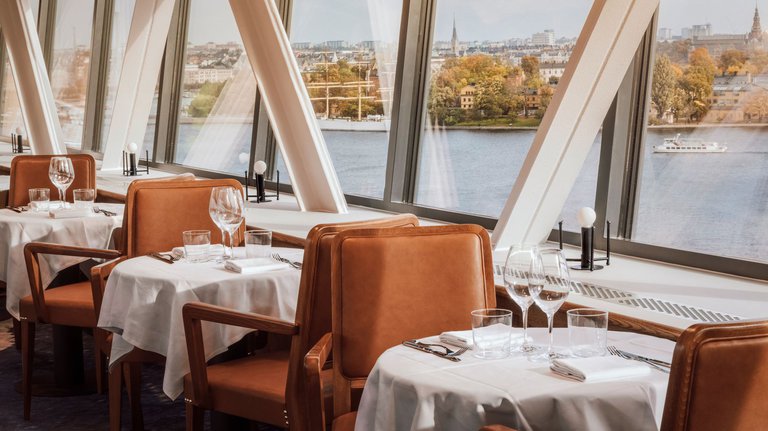
- KB, Konstnärsbaren (1931) – Konstnärsbaren, literally meaning "the Artists' Bar", is fittingly located in the unique Konstnärshuset (, "The Artists House"); one of the few examples of Venetian Gothic architecture in Sweden. The restaurant regularly changes the artwork hanging on the dining room walls – and all paintings are for sale.
- Gondolen (1935) – Inspired by a passageway leading up to airships, Gondolen opened in 1935. It wasn't until the 1990s though, when celebrity chef Erik Lallerstedt took over the restaurant, that it became a fine-dining favorite in Södermalm, after having closed several years for renovations. Gondolen reopened in 2023. The management is new, but the unbeatable view remains the same.
- Teatergrillen (1945) – Originally a part of nightclub Riche, Teatergrillen became a separate entity in 1945. Named for its proximity to the Royal Dramatic Theatre, Teatergrillen quickly became a hotspot for Stockholm's cultural elite. Ynge Gamlin's interior decor, from the 1968 renovation, is still in excellent condition.
- Ulla Winbladh (1950s) – The restaurant Ulla Winbladh opened in the mid-1950s, named after the iconic poet Carl Michael Bellman's fictitious nymph. The villa was originally built for the 1897 Stockholm World's Fair, during which it housed a café and pastry shop.
- Grodan (1985) – A contemporary classic that opened in the mid-80s. Similarly to Prinsen, Grodan originally had a French name (la Grenouille) that eventually was renamed to its Swedish translation (meaning "the frog"). The main dining room was originally part of another restaurant, Tattersall (1898-1968), and has been carefully restored to its turn-of-the-century splendor.
- Crêperie Fyra Knop (1993) – Another contemporary classic and probably Stockholm's (and perhaps Sweden's?) first French crêperie. The rustic and cozy Fyra Knop has served savory galettes, sweet crêpes, French cider and wine since 1993.
